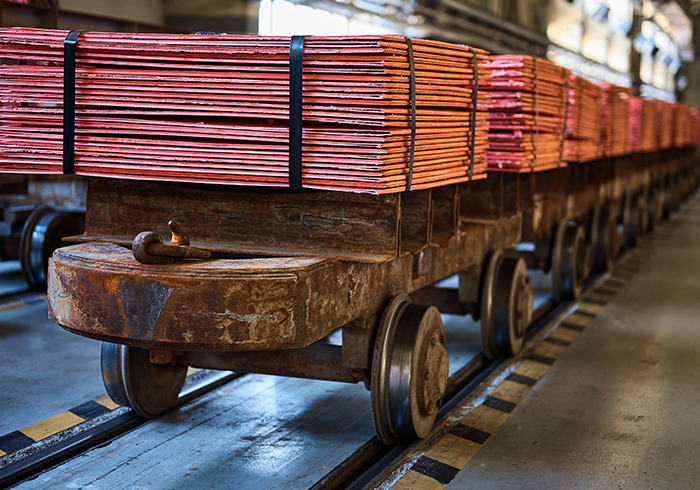The US government’s surprise decision to exempt refined copper from 50% tariffs is unlikely to dent the profits of commodity traders expecting bumper returns, but could create complications for smaller buyers and financial players.
During the first half of this year, traders rushed to move copper into the US ahead of anticipated tariffs, pushing domestic prices to record highs, far above those elsewhere in the world.
This trend accelerated in early July when US President Donald Trump indicated tariffs would be set at 50% from August 1, with commodity traders seizing the opportunity to lock in major profits from the arbitrage between vastly different prices.
However, the government announced on July 31 that the 50% levy would apply only to semi-finished copper products and copper-intensive derivative products, rather than input materials such as ores, concentrates and cathodes.
The announcement meant refined copper – which made up nearly 60% of US copper imports last year, according to research by ING – would not be subject to the higher rate.
The move prompted a 19% drop in US copper prices, described by ING as the largest intraday fall on record.
The bank said in the hours after the announcement it expected the 28% premium for US copper to “collapse”, and that much of the inventory stockpiled in the US would likely be re-exported.
The “extremely attractive arbitrage opportunity… has come to an abrupt and brutal end”, says Jean-François Lambert, founding partner of trading and structured finance consultancy Lambert Commodities.
Lambert says he does not expect large commodity traders to lose out as a result.
“Most of these physical trades were hedged via futures,” he tells GTR. “While the arbitrage profits are now gone, what was already locked in will still be realised, assuming customers fulfil their physical commitments.”
That, however, is a “big if”, he adds. Though large and reputable buyers are likely to “bite the bullet”, smaller buyers may be tempted to default.
In the scenario where buyers fail to take delivery of goods, exchange-eligible copper is likely to be moved to CME Group or London Metal Exchange (LME) warehouses. Bloomberg reported on July 31 that traders were already booking storage space in anticipation of a flood of copper to the LME.
Lambert says that for other grades of copper – likely a minority of traded volumes – traders “will have no choice but to absorb the losses through price adjustments or re-export the material to non-US destinations, both of which would incur losses”.
Bloomberg reported last week that Mercuria, IXM and Trafigura are among those that have shipped non-exchange-grade African copper to the US this year.
Before the July 31 announcement, law firm Reed Smith published an article warning that disputes between counterparties could arise if tariffs are introduced before shipments have been delivered, particularly if contracts do not specify who is responsible for paying the higher duties.
Nick Moon, a partner at the firm and author of that article, told GTR after the announcement that “to some extent, that issue falls away”.
“The angle where a dispute might arise probably shifts away from liability for tariffs, and becomes a question of whether the buyer no longer wants the copper,” he says.
“And likewise, now that the premium of US copper to global has dropped off, would a seller rather just move it to a different market outside the US? If there is going to be an area where a dispute arises, following this latest news, that’s probably more likely.”
There are additional complications for other market participants, particularly those with “purely speculative positions”, Lambert says.
“Hedge funds and other financial players could face significant losses, as they will be required to take physical delivery – something they did not anticipate,” he says.
Lambert says that in this scenario, financial players can roll their position forward, but with futures contracts higher than spot rates, this would result in losses.
Alternatively, they can engage a trader to buy the physical goods or facilitate their movement.
“In both cases, that could prove extremely expensive for the financial player and extremely remunerative for the physical trader,” he says.








